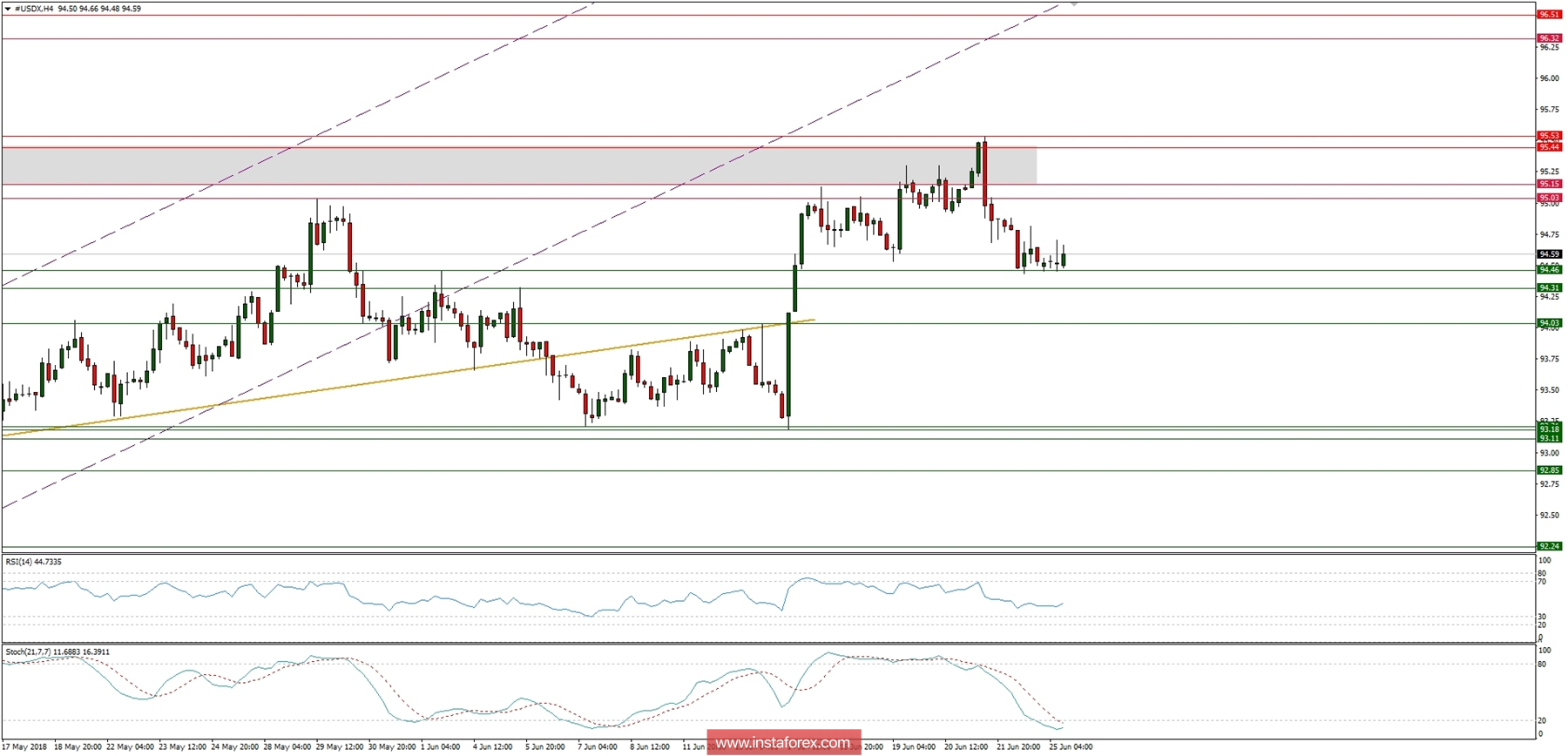On the currency market, JPY is still being perceived as the safe-haven asset, followed closely by CHF and USD. The situation that on Friday morning had looked like rebounding fears and focusing on positive macro signals (satisfactory PMI from Eurozone), was quickly crushed by the subject of trade wars. US President Trump first threatened to impose a 20% duties on cars imported from the EU, which is supposed to be a response to the revenge duties imposed by the EU on EUR 2,8 billion worth from the USA, including motorcycles, orange juice and Bourbon, which was a reaction to Trump's earlier sanctions on the import of steel and aluminum. During the weekend, a portion of nervousness was added by the US financial media reports that the Treasury Department at the request of the president is preparing legislation that will block investments in the US technology sector for companies with Chinese capital. Whoever believed that by the end of the quarter will manage to get a good night's sleep, now he has to revise his strategy, because again things can take a chaotic turn.
It is comforting that although the risk aversion prevails today in the markets, traders do not have violate movements, so they may manage to control the nerves and maintain the sobriety of the mind. On the one hand, you can rationalize that Trump says more than it does and, ultimately, the consequences for global recovery will be minimal. On the other hand, there is no guarantee that Trump's strategy will always be effective and at some point, the patience of the other party will run out. What will happen when Trump does not get what he wants? How will his answer be then? If investors start to fear such an event, the possibility of the ongoing the fear spiral might be very high because, in the markets, fear sometimes towers over common sense and facts. It was only the Italian political crisis that day that day became the subject of the day that affected the broad financial market. It is worth remembering during the holiday malaise.
The last week of June does not abound in key macro events. Tensions in global trade should remain at the forefront, and their impact on business can be confirmed in data from Germany and the US. In the first case, the Ifo index catches the attention today: in the face of trade tensions and weak industry results, the index was expected to fall and so it did. The Ifo Business Climate Index has fallen to 101.8 from 102.3, the Ifo Current Assessment index has dropped to 105.1 from 106.1, but the Ifo Expectations index was at the very same level as a month ago at 98.6. In conclusion, the German managers are not yet afraid about the economy and are still optimistic regarding the future business conditions.
Let's now take a look at the US Dollar Index technical picture at the H4 time frame. The market has made a swing top at the level of 95.53 and since then is pulling back from the highs. Currently, the price is testing the support at the level of 94.46 in oversold market conditions, so there is a chance for a bounce higher from here. The first technical resistance is seen at the level of 95.03 and 95.15.






















